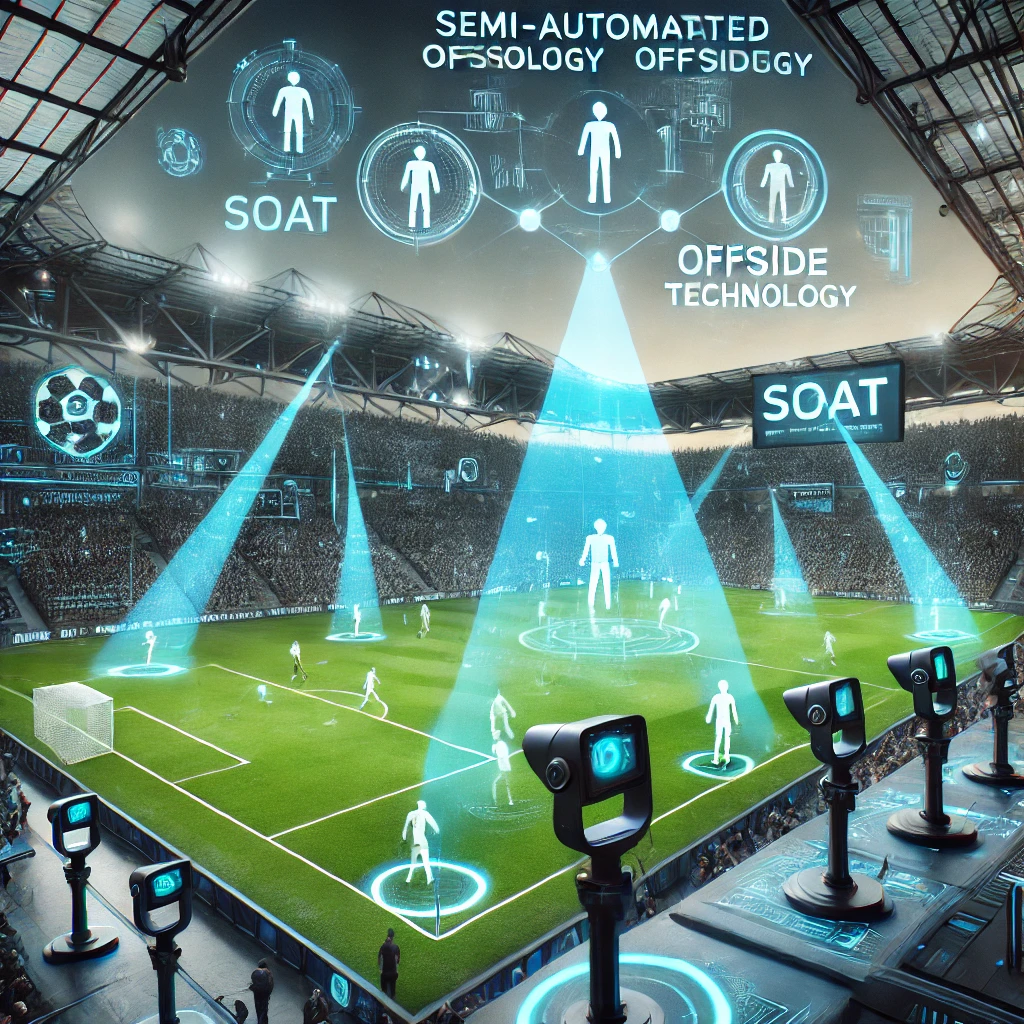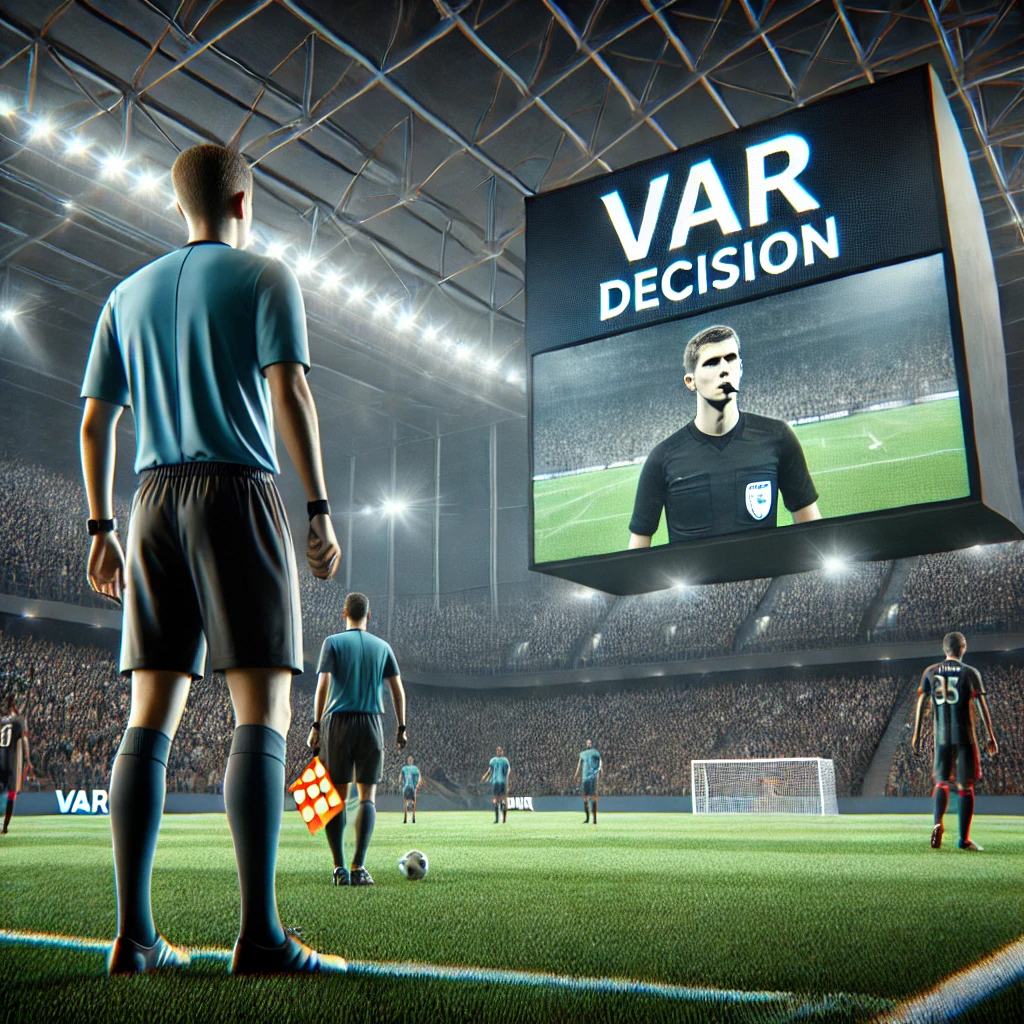In football’s long history, something big happened during a friendly match between Italy and France on September 1, 2016: the introduction of Video Assistant Referee (VAR) technology. Soon after, the first official match using VAR took place on September 21, 2016, when Ajax faced Willem II in the KNVB Cup. Major leagues watched closely and by the 2017-2018 season, the German Bundesliga and Italy’s Serie A had adopted VAR. Spain’s La Liga and France’s Ligue 1 followed one year later in the 2018-2019 season, and in the 2019-2020 season, the Premier League, the wealthiest competition in football, implemented VAR as well (Nag, n.d.).
The Impact of VAR
Since the introduction of VAR, it has served its goal of making the game fairer. A study by Spitz et al. (2021) examined the impact of VAR on referees’ decision accuracy by comparing referees’ first and final decisions after VAR interventions. Results showed that referees’ accuracy improved from 92.1% to 98.3%. Furthermore, Carlos et al. (2019) found that VAR led to more accurate decisions and a decreased number of fouls, offsides, and yellow cards.
However, despite these improvements, not everyone seems to be a fan of VAR. VAR has faced growing criticism as it disrupts the free-flowing nature of football, one of the key reasons that football is the world’s most popular sport. Unlike stop-start games such as in the NBA or NFL, football is continuous in its essence (Euronews, 2022). Unfortunately, the introduction of VAR has resulted in more stoppages and delays in professional football, with referees often having to wait for decisions to be made by VAR officials far away from the stadium (Euronews, 2022). These interruptions have frustrated fans. In last season’s Premier League, the average VAR interruption took 64 seconds, extending the average game length to 102 minutes. In some cases, such as in a game between West Ham and Aston Villa, VAR took as long as 5 minutes and 37 seconds to disallow a goal (The Guardian, 2024).
The Future of VAR: Semi-Automated Offside Technology (SOAT)
This dissatisfaction has been listened to. For the 2024-2025 season, the Premier League plans to introduce a new and revolutionary version of VAR, using semi-automated offside technology (SOAT). Developed by Genius Sports, SOAT is an AI-powered system which will use 28 computer vision cameras in every stadium (The Guardian, 2024; Premier League, 2024). These cameras will capture 10,000 surface data points for the ball and each player, which allows Genius to immediately create so-called “offside walls” for VAR to use. The Premier League expects SOAT to reduce the average time for offside decisions by over 30 seconds (Premier League, 2024). Additionally, SOAT allows for 3D player graphics so that these can be shown on television, significantly improving experience and fan engagement for fans both at home and in the stadium.

In conclusion, the evolution of VAR technology in football reflects both the sport’s commitment to fairness and the challenges of maintaining its beloved flow. As fans express frustrations over delays and disruptions caused by VAR reviews, there is hope that innovations like AI-driven SOAT will bridge this gap. With quicker, more transparent decision-making and enhanced in-stadium experiences, AI has the potential to make VAR a tool that both referees and fans can embrace. As football continues to evolve, the role of AI may be crucial in ensuring that technology enhances rather than detracts from the passion and excitement that define the beautiful game.
SOAT was expected to be ready for use after one of the autumn international breaks during the 2024-2025 Premier League season. With the first break now behind us, the time has come to see if SOAT delivers on its promise.
References
Carlos, L. P., Ezequiel, R. & Anton, K. (2019). How does Video Assistant Referee (VAR) modify the game in elite soccer? International Journal of Performance Analysis in Sport, 19(4), 646-653. https://doi.org/10.1080/24748668.2019.1646521
Euronews. (2022, February 3). VAR: Has it improved football or has it made it worse? Euronews. https://www.euronews.com/2022/02/03/var-has-it-improved-football-or-has-it-made-it-worse
Nag, U. (n.d.). What is VAR in football?. Olympics.com. https://olympics.com/en/news/what-is-var-in-football
Premier League. (2024, August 14). What’s new in 2024/25: Semi-automated offsides. Premier League. https://www.premierleague.com/news/4082349
Spitz, J., Wagemans, J., Memmert, D., Williams, A. M., & Helsen, W. F. (2020). Video assistant referees (VAR): The impact of technology on decision making in association football referees. Journal of Sports Sciences, 39(2), 147-153. https://doi.org/10.1080/02640414.2020.1809163
The Guardian. (2024, August 13). Premier League to introduce revolutionary camera system to aid VAR process. The Guardian. https://www.theguardian.com/football/article/2024/aug/13/premier-league-to-introduce-revolutionary-camera-system-to-aid-var-process


Great Post! I also think that the “flow” of a football game is interrupted by the VAR, way too often. In my experience, it happens a few times every game and also decreases the overall mood and experience within the stadium. However, this also showcases the impact AI can have on sports, as it improves and supports human decision-making, decreasing human errors in an industry where a small mistake by a referee can have a huge impact on the whole outcome of the game. I truly support the VAR, even if it interrupts the game too often, but with an automated off-side decision-making tool as you introduced in this post, AI can enhance the efficiency and accuracy of decisions, and this results in a fair game, where no one can lose because of a mistake or human error.
What is your opinion on this new tool? Do you have any concerns regarding technological challenges besides technical errors? One concern I have is that the offside rule can be quite complicated, and it also depends if a player is actively involved in the play or not, do you think AI can make a decision here, differentiating between actively involved and passively involved players? In the past, this required human observation from VAR, on-field referees, and much sensitivity.
Interesting analysis Tijn! The history and evolution of VAR technology in football is nicely captured in your article, especially the balance between improving fairness and maintaining the game’s natural flow. The breakdown of how VAR has improved decision accuracy while also causing fan frustration is also what I experienced as a german football fan at my regular visits to the stadium. I like that you gave us a look beyond the horizon with the introduction of SOAT. I believe it is especially promising, as it addresses one of the key criticisms, the delays in football… It will be exciting to see how this innovation performs and whether it will truly enhance the game without compromising it’s flow. As technology and football continue to intersect, I expect both fans and professionals to play a great role in shaping its future use.
Interesting blog which I am sure you wrote about with excitement! Even though VAR interventions interrupt the games, I find a great addition to the fairness of the game. There were a lot of discussions about referee’s decisions in favour of one of the teams, but now with the usage of VAR, there is (almost) no more room for discussions or interpretations about referee decisions. It was long awaited in my opinion, since football was the only big sport that didn’t have such technology adopted by 2016.
In terms of the SOAT technology, I truly believe that it will help the VAR take the decisions faster when it comes to off-sides, but it should always be backed up by a second verification of the VAR assistant referee. It is still quite hard to train such a software and until not trained properly, it can through errors, which means wrong decisions. It is also quite hard to define the rules of off-side to a programme, since I think they modified quite some times already only in the past 5 years the off-side rule (with which part of the body should actual be in front of the last defender). But nevertheless, once fully implemented and with enough training data, this will definitely be a great addition to the game!